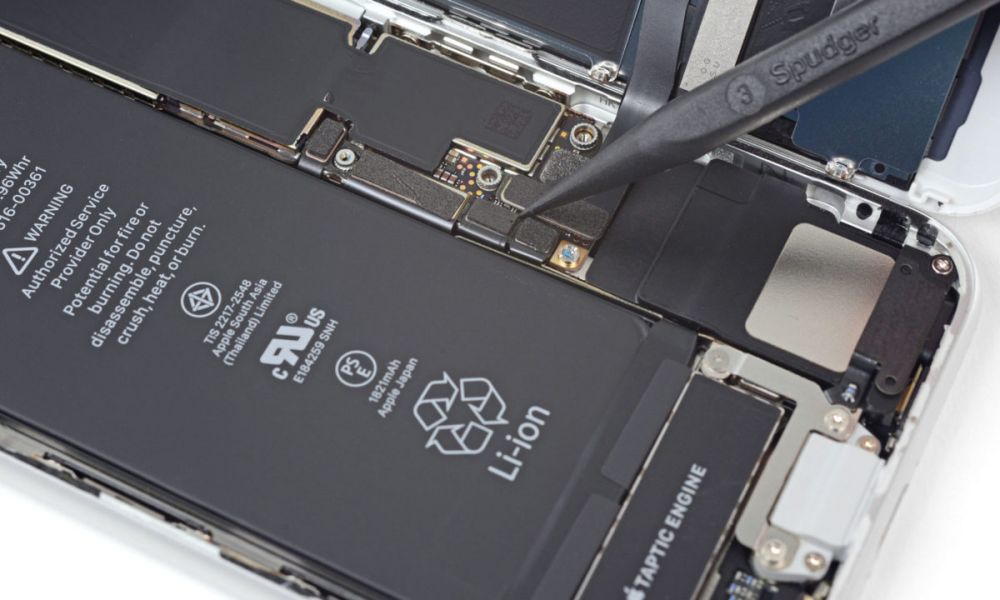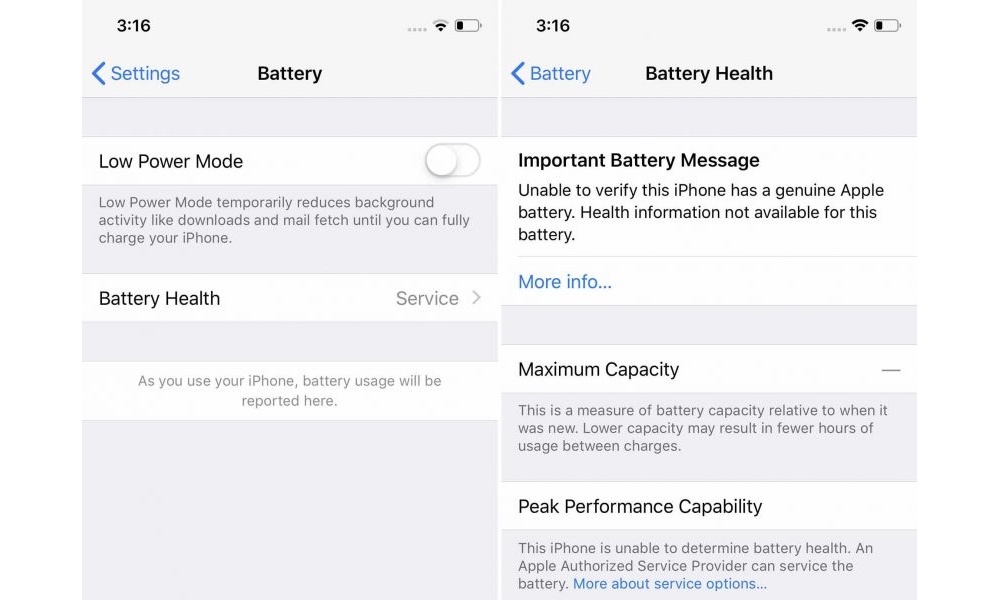Apple Is Locking Down iPhone Battery Replacements

Toggle Dark Mode
There’s no doubt that Apple’s iPhones and iPads are great, fun, and popular devices, and much of that comes from Apple’s insistence on controlling as many of the pieces as possible; Apple not only builds both the software and the hardware, but also exercises an unusual level of control over third-party accessory makers and even app developers, dictating what can and can’t be plugged into, or installed onto, an iOS device.
This approach generally results in a better user experience by ensuring that everything works together very well, but there’s also always been a darker side to Apple’s behaviour in this area, and this is the most apparent when it comes to getting its devices fixed.
There’s been absolutely no doubt that Apple wants to ensure that iPhone users get their iPhones serviced only by those specifically trained to do so — Apple’s own stores and those companies specifically authorized by Apple as service providers — however the company goes to great lengths to ensure that all repairs remain solely its own purview, fighting legislation that would empower customers to do their own repairs, and putting an unusual amount of effort into taking down small repair shops.
Locking Down Repairs
It’s also not uncommon for Apple to take other steps to ensure that it’s the only company that can make certain repairs, and while some of these may be defensible — for example the 2016 Error 53 incident that affected users who had their secure Touch ID sensors replaced by unauthorized service providers had understandable security ramifications — others seem just downright draconian and designed explicitly to preserve Apple’s own position as a provider of after-market repairs.
Now it looks like iFixit has discovered the latest example of an Apple policy that fits more into the second category: requiring replacement batteries to be “authenticated” before an iPhone will detect them properly.
A ‘Service Battery Soon’ Light
Following last year’s hue and cry from aging batteries and slowing iPhones, Apple introduced a pretty handy “Battery Health” feature in iOS 11.3, allowing users to view a basic diagnostic showing the condition of their iPhone battery, and most notably whether it was old enough to be degrading an iPhone’s performance and therefore needing a replacement. While the Battery Health feature has mostly been a positive thing, it seems that it now hides what iFixit calls a “dormant software lock” that not only ensures that only Apple batteries can be installed in Apple’s iPhones, but that only Apple service providers can actually install them.
One of the aspects of Apple’s Battery Health feature is an indication as to when the battery specifically needs service — think of it as a “Check Engine Soon” light on a car. It’s a user-friendly way of indicating that something is wrong and they should “take it into the shop” without boring a user with all of the technical details.
This “Service” indicator is the equivalent of a “Check Oil” light that only a Ford dealership can reset, even if you change the oil yourself.
Craig Lloyd, iFixit
The problem, however, is that it seems that this indicator will be triggered any time the battery is replaced, and only Apple’s authorized service agents can actually reset it. As vlogger Justin of The Art of Repair demonstrated, swapping in a genuine Apple battery taken from another brand new iPhone resulted in a “Service” message appearing in the Battery Health section, along with an “Important Battery Message” that it’s “unable to verify this iPhone has a genuine Apple battery.”
As iFixit explains, this works because the battery itself includes a controller chip that actually “authenticates” each battery to the specific iPhone it’s installed in. Apple authorized service technicians are obviously given the tools and training to pair up a new battery during the replacement process, but of course Apple doesn’t offer these methods to anybody else. Further, the authentication feature of the battery isn’t mandatory — Apple could have chosen to simply ignore it.
Protecting Users or User-Hostile?
If this message was simply trying to authenticate genuine Apple batteries, it would be completely understandable. After all, Apple is not only under no obligation to monitor the health of an aftermarket or counterfeit battery, but probably can’t even do so reliably. Further, we really can’t blame Apple for discouraging the use of unauthorized components that could actually damage an iPhone — and unlike most components, a bad battery can actually be extremely dangerous.
However, as iFixit points out, Apple is arguably taking this a step too far by preventing third-party or do-it-yourself repairs even if they’re using 100% genuine Apple batteries. While this is consistent with Apple’s continued battle against “right to repair” legislation, iFixit is calling it a user-hostile choice.
You bought it, you own it, you should be able to fix it. It’s that simple. Pairing batteries to iPhones is a gross overreach.
Craig Lloyd, iFixit
But is it? It’s easy to understand how many would feel this way, especially companies that are focused on do-it-yourself repairs, along with many smaller repair shops that regularly service smartphones but aren’t able to be authorized by Apple to do so. Of course, on the other hand, Apple repeatedly makes the claim that it’s trying to protect users from hurting themselves, and while battery repairs are usually pretty innocuous, they can be dangerous under certain circumstances, even if only genuine Apple batteries are used. Consider that even Apple prevents certain types of in-store battery replacements, such as those involving swollen batteries.
It’s also worth keeping in mind that since Apple doesn’t sell its official batteries to anybody other than service providers that it has authorized, it can make the argument that nobody else should be installing a first-party battery into an iPhone anyway, although as iFixit and Justin both demonstrate, there are legitimate cases where a user might want to swap a battery from another iPhone.
How Much of a Problem is This?
It’s important to note that this is largely a cosmetic issue — at least for now. iFixit has confirmed that a replacement battery will continue to work fine in every other way, and you’ll even get all of the benefits of a new battery, which means there’s no throttling of performance. Only the actual Battery Health section appears to be impacted, but of course this means that you won’t be able to monitor that health of your battery so that you know when it’s time to replace it.
It’s also not clear whether iOS is still monitoring the battery health internally and simply refusing to display the results, but if not, this could cause other problems as the battery ages, such as the kind of premature shutdowns that Apple has worked to avoid by throttling performance with older batteries.
Of course, the simplest way to avoid the issue is to always have your iPhone serviced at an Apple Store or authorized Apple service provider, and this is even more true when it comes to dealing with battery replacements. Apple doesn’t sell parts to unauthorized service providers, and while many still manage to get their hands on official Apple parts through grey market channels, there’s still the possibility that you could be getting a potentially risky third-party or counterfeit battery replacement.







